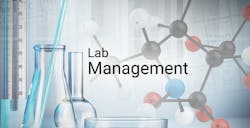Automated temperature monitoring systems: things to consider
During the last few decades, advances in automation have allowed laboratories to increase both speed and safety while reducing costs. The automation of preanalytic and analytic diagnostics has been one of the themes of the story that is the modern clinical lab. The same can be said for the technology that labs have used to monitor, record, and alarm temperature and environmental conditions—crucial aspects of quality control with direct impact both on patient safety and cost reduction. Refrigerators, freezers, stability chambers, and other pieces of critical equipment require constant temperature monitoring. Documentation, calibration, and validation of data gathered during the monitoring are also a key consideration. The need for automated temperature monitoring has been increasingly recognized by clinical laboratory directors, and this has created a demand for technology that manufacturers have endeavored to fill.
Before the 1980s, most temperature monitoring was done manually. This required a significant amount of time, energy, space, and training, and it came with a substantial price tag. The process was very cumbersome and was prone to human error. It was during that decade that the first-ever centralized automated temperature monitoring system was developed.
As clinical labs try to do more with less and, at the same time, seek ways to quantifiably differentiate themselves from their competition, it becomes crucially important for laboratory directors to choose the right automated monitoring system for their facility. An overview of today's temperature monitoring systems can be broken down into three main components: data delivery, main system/ software infrastructure, and service functionality/compliance.
Delivering the data
Delivering the data from the equipment to the monitoring system can be a challenge. The traditional hard-wired systems are very reliable and offer many buffering options. They're usually preferred with stationary equipment and use existing wiring infrastructure, and they can be on the network or stand-alone. The alternative, of course, is a wireless system. Eliminating wiring saves materials and resources, provides flexibility regarding equipment relocation, and can expedite installations.
Better wireless systems have data buffering at transmitter level. To ensure safety, systems should also contain communication alerts and constant data transmissions. Wireless systems should employ self-diagnostics including battery alarm, reliable two-way communication, and self-healing mesh networks. One of the latest advancements among the wireless options is a Wi-Fi system. Wi-Fi systems are quickly gaining popularity due to their scalability and installation-friendly design. One main selling point is their ability to utilize a facility's existing wireless infrastructure. Systems that can handle multiple installation and hybrid capability offer the most flexible and reliable implementation.
Monitoring infrastructure
Monitoring systems infrastructure can be stand-alone, networked, or managed through the cloud. Stand-alone systems eliminate the need for any network infrastructure, but they may have limitations when monitoring multiple locations. Networked systems offer more options to manage and interact with a system. The newest emerging option is a cloud-based monitoring system. Cloud-based monitoring provides a secure, fast, and easy way to continuously monitor critical equipment through the cloud. Such a system requires only a data connection and does not require a PC, software, or a server. It gives the end user the ability to view the status of equipment through an app or a browser. A good quality cloud system will be 21CFR-compliant (electronic signatures) and should provide the ability to monitor multiple locations from anywhere.
A high-quality monitoring system should be scalable. It should monitor critical equipment 24/7/365 and offer the ability to monitor just a few points or thousands. The system should also be able to monitor all types of equipment (refrigerators, freezers, stability chambers, LN2 tanks, etc.) and provide various sensor options depending on a laboratory's needs. A sophisticated system will offer instant data access and analysis from a desktop, tablet, or smart phone.
There are various ways in which staff members can be notified in the event of an alarm. The system should be able to alarm at a local and system-wide level. Local alarming can be done through audible and visual alarms. Alerts and alarms are now available that can notify staff via interactive phone, text, and e-mail. The system should provide multiple call lists that allow the lab director to specify different people in different departments on different time schedules. The alarm message should explain which input number was out of range, what the current reading was, and the low and high limits.
Functionality and compliance
The documentation and reporting aspect of the monitoring system is of great importance. Regulatory agencies such as the Food and Drug Administration (FDA), AABB, and The Joint Commission play a major role in determining what kind of data should be monitored. The ideal system should produce a detailed, easy-to-understand, and accurate account. It should provide the ability to create real-time reports as needed. Lab staff should be able to generate a report using historical or current data based on time, date, activity, input, and event type. These reports should be accessible from any work station.
A reliable system must include proper testing to make sure it is operating as intended. The system provider should offer localized/ regional service with regularly scheduled maintenance and validation. The provider should also have supporting documentation of these validations that will ensure regulatory compliance. Key components of the service and documentation should include onsite IQ/OQ, sensor calibration, detailed test protocols, and software upgrades.
Last, a high-quality system will have a data redundancy and be dependable. In case there is any kind of disaster or power outage resulting in main system failure, the system should have a backup. In case of failure of the main system, there should be a backup system that goes into effect and immediately start monitoring the equipment. There should also be battery backups, automatic data backups, auto resets, and alarm notifications in the event of system failure. The monitoring systems provider should also provide a reliable support staff that has regionalized coverage and is always available.
To recap, data delivery, main system/software infrastructure, and service functionality/compliance are just a few things to examine while shopping for an automated temperature monitoring system. There is much competition emerging in this industry—which is a good thing—but that also underscores the need to make informed choices.

